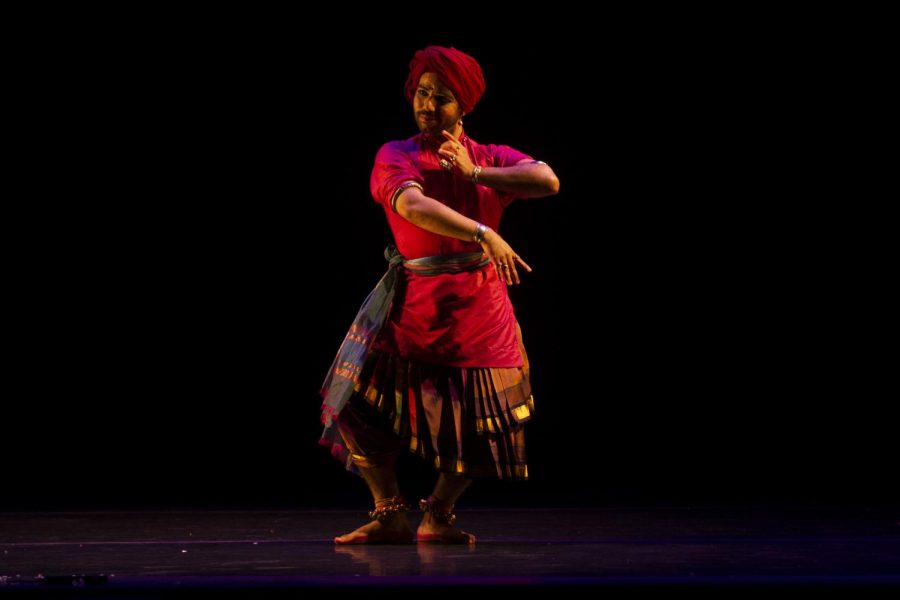Kuldeep Singh shines in Englert
Singh’s performance So Many Journeys, celebrated nature and spiritual unity through the Odissi dance form.
Kuldeep Singh performs his Odissi dance in the Englert on April 26, 2019.
April 27, 2019
It begins with a soft buzz, luring the audience’s attention. Lights flash on, filling the stage with an orange and red glow. A melodic voice joins the soft buzz, backed by Indian-style instrumentals. Finally, Kuldeep Singh walks in, wearing a fiery red turban and equally bright yellow-orange attire. He is decorated like the sun, reflecting orange and red light back out toward the audience.
This was the first minute of multitalented artist Kuldeep Singh’s performance at the Englert on April 26. It was the first show in his tour So Many Journeys, a five-set piece of the Odissi dance form; the first, second, and fifth dance pieces were self-choreographed. The fourth act was a short film made by Singh himself earlier this year.
Singh said he had worked on the choreography since the songs were composed in April 2018. The first piece represented people as a single human species as he danced through the “cycle of existence itself.” As the sun is the source of all energy for the Earth, Singh was the source of all energy in the Englert.
He danced barefoot with bells wrapped around his ankles, so every step he took let off a loud jingle that went with the beat of the music, similar to tap dancing. His steps were quick, delicate, and purposeful. He was light on the balls of his feet, dancing on a cloud. His arm movements were similarly graceful, but at times, his red-painted hands shook with passion as he raised them above his head. He stared upward, as if mesmerized by some imaginary Divinity above him.
His movements captured metaphorical images. His hands represened a cup to drink from, then become a fish swimming through the air, fluttering like a bee, circling each other as the planets orbit the sun, or holding a shield powerfully out in front of him. His energy grew and shrank with the flow of the songs. He brought the audience into his own world, his stories unknown but emotion felt in the theater.
The third dance was followed by Singh’s own short film, which he finished just weeks before the show. The film comprised shots of deserts and beautiful Indian architecture, reflecting the relationship between humans and the Earth. In Singh’s view, it was all hand-shot and hand-edited. It showcased the beauty of life cycles from creation to destruction in nature. The music of the film was a constant futuristic ring in the ear, almost painful, yet oddly soothing.
Following, Singh came out in a costume change, now dressed in blue, silk-like attire, but the crimson bright turban remained. This fifth and final act heightened the speed and energy of his choreography, and by the end, he was dripping with sweat.
Singh’s performance left a certain peacefulness on stage to unite humans and nature, highlighting the interconnection among every individual in Englert. His time on stage felt spiritually calming and uniting and left a lingering presence that harmonized the audience.



